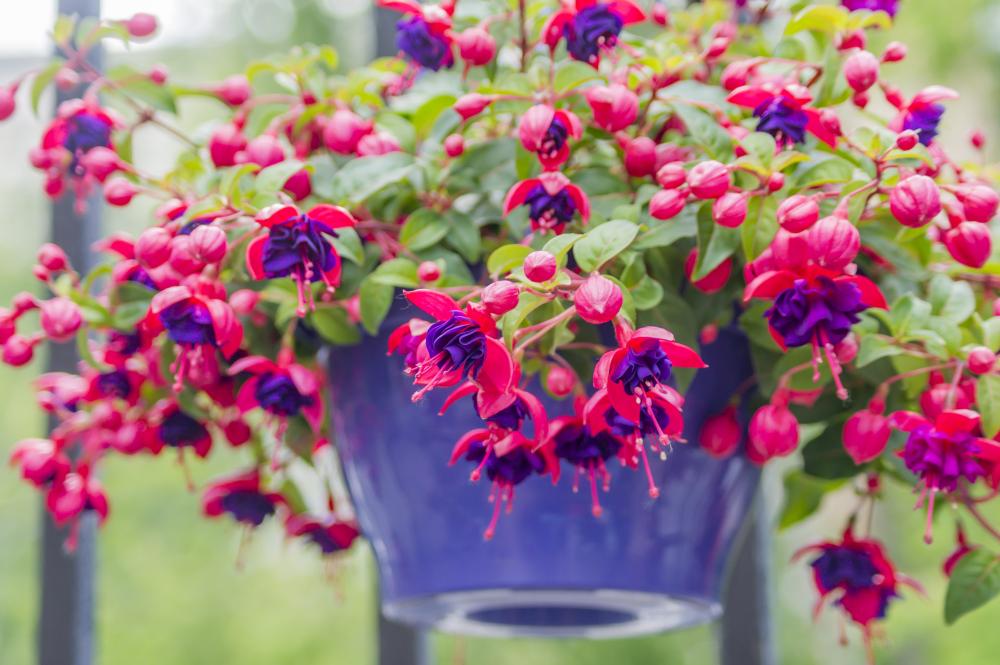Fuchsia plants are popular for their vibrant, pendulous flowers and are a favorite for hanging baskets and containers. Here’s a comprehensive guide on how to care for and plant fuchsias:

Planting Instructions
- Choosing the Right Location:
- Light: Fuchsias prefer partial shade to full shade. They need some morning sunlight but should be protected from the intense afternoon sun.
- Soil: They thrive in well-draining, fertile soil. Amend the soil with organic matter to improve fertility and drainage.
- Planting in Containers:
- Choose a container with good drainage holes.
- Use a high-quality potting mix that retains moisture but drains well.
- Ensure the pot is large enough to accommodate the root system.
- Planting in the Ground:
- Dig a hole twice as wide and as deep as the root ball.
- Place the plant in the hole so that the top of the root ball is level with the soil surface.
- Backfill with soil, pressing gently to remove air pockets.
- Water thoroughly after planting.

Care Instructions
- Watering:
- Fuchsias like consistently moist soil but do not tolerate waterlogged conditions.
- Water regularly, especially during dry periods. Ensure the soil is moist but not soggy.
- Fertilizing:
- Feed with a balanced, water-soluble fertilizer every 2-4 weeks during the growing season (spring to early autumn).
- Reduce feeding in late autumn and winter.
- Pruning:
- Prune fuchsias in early spring to remove dead or weak growth and to shape the plant.
- Pinch back new growth to encourage bushier growth and more flowers.
- Temperature and Humidity:
- Fuchsias prefer cool, mild temperatures. Ideal temperatures are between 60-70°F (15-21°C) during the day and slightly cooler at night.
- High humidity is beneficial, so misting the plants during dry spells can help.

- Pest and Disease Control:
- Watch for common pests like aphids, spider mites, and whiteflies. Treat infestations promptly with insecticidal soap or neem oil.
- Prevent fungal diseases by ensuring good air circulation around the plants and avoiding overhead watering.
- Overwintering:
- In colder climates, bring container-grown fuchsias indoors before the first frost.
- Reduce watering and allow the plant to go dormant in a cool, dark place.
- In milder climates, mulch around the base of outdoor plants to protect the roots from freezing temperatures.
By following these guidelines, you can enjoy the beauty of fuchsias in your garden or home, whether they are grown in containers or in the ground.


